It’s Time for Video Streamers to Embrace Gaming

A few weeks ago, it was our turn with the streaming controller. (Taking turns eliminates a lot of arguments) so we finally got a chance to watch Netflix’s End of the Road. We’re a sucker for Queen Latifah action projects.
We really enjoyed it. My wife watched intensely. Daughter followed the film in between her social media “duties.” Son probably saw some of it in between his online computer game play.
That just about sums up the entertainment activities for the ordinary family – Millennials plus are satisfied with series/movie entertainment, Gen Z’s have their own favorites when it comes to entertainment: social media, video games, music and then streaming content.
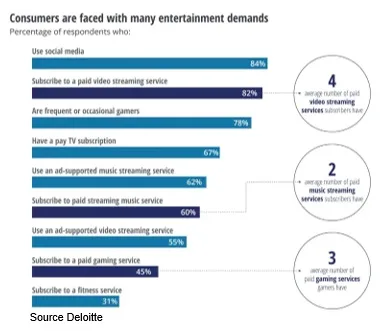
Sure, they’re never far from their online social communities; but according to Deloitte, when it comes to entertainment, playing video games is their first choice (26 percent), followed by listening to music (10 percent),
Watching movies/shows came in fifth with the younger crowd with only 10 percent saying it was their favorite form of entertainment.
Netflix has often said his biggest competition isn’t HBO Max or Disney +. Or for that matter, not even sleep … it’s video gaming!
Before buying Next Games and Boss Flight, Netflix officials told its shareholders, “We compete with (and lose to) Fortnite more than HBO.”
It will be a long time before the two mobile gaming companies turn any profit for the company, but this isn’t about winning in streaming media or the gaming industry.
It’s about winning in the entertainment industry.
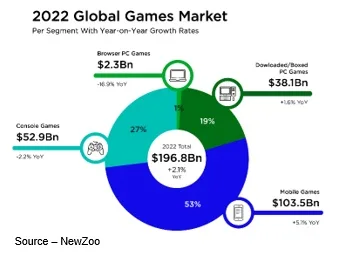
Sure, video gaming is important. It’s projected to be a $103.5B industry this year, double the size of the movie industry.
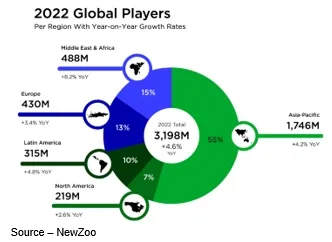
The industry has about 3+B video game consumers.
With a subscriber base of 222+ M (on a good day), that’s a huge new target market and the churn isn’t as bad as it is in today’s streaming video market.
Part of that is because video gaming opens the entertainment door wider than just passive screen viewing.

Video gaming enables Gen Z (and every generation) to step into totally new, different, impossible worlds that enhance and deepen player/subscriber engagement.
It’s not a Netflix epiphany.
Actually, it’s a page out of Disney’s Flywheel playbook that Walt Disney developed back in the mid-1950s. Disney (or one of its team) sketched out how the company could feed its own success.

Things went slowly until Bob Iger became boss in 2005, Flywheel cogs were added, including an official fan club and today’s Disney +.
Netflix already has their own online shop, titles based on video games – Witcher, Castlevania, Cuphead, Arcane – titles that are becoming games – Squid Game, Strange Things, F1/Drive to Survive – and more opportunities to blur the lines between video content and gaming.
Gaming blends perfectly with Netflix global aspirations, giving subscribers sit-back entertainment as well as downloadable content about the show/characters and the ability to express themselves, become immersed/part of the story, connect with others and just relax.
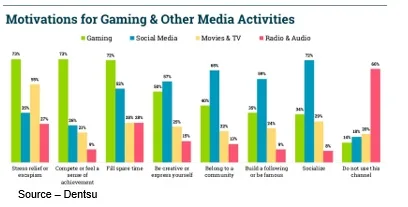
Put together, it could/should reduce churn!
Part of the increased interest in cloud/streaming gaming is the fact that it’s now available to almost everyone.
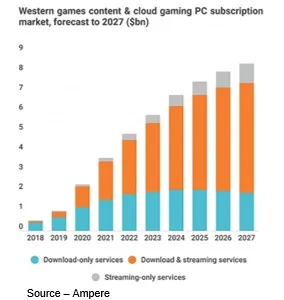
Sure, there are a lot of dedicated gamers like our friends Jon, Mark and Rob who are constantly in newer, better, more powerful hardware to pit their skills against the latest, most demanding games. But they aren’t our kids or the millions of folks of all ages around the globe who like to be a part of the gaming community.

Of course, Netflix, Disney, Apple, Amazon and the other streaming video services are also entering an arena where there are also some major competitors with lots of extensive experience.
Nvidia’s GeForce Now, Google’s Stadia, Sony’s PlayStation Now and Xbox’s Project xCloud already have a heady lead in the serious gaming arena and are very interested in moving down-market to attract the casual gamer with multiplayer opportunities, branded content and virtual goods to provide folks of all ages with a totally involved social experience.
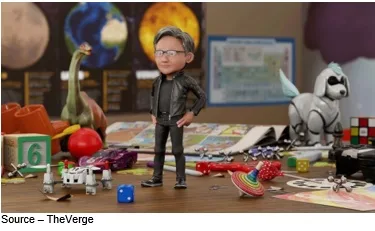
We realize that a lot of people are trying to convince us that now is the time to step into the Metaverse. You know, strap on a headset and go about your work/play like it’s absolutely natural, logical.
Sorry but if we’re going to be in a meeting, we want to actually be in a meeting … how dangerous can it be?
The idea of virtual shopping isn’t as satisfying as touching the fabric, trying the clothes on, thumping a watermelon or test driving a couple of different EVs.
However, when it comes to taking on a bunch of lizard people, fending off zombies, or battling to save the universe on a distant planet, actually being there isn’t such a smart idea.
In other words, meta stuff is great for a break from the real world when we want to unwind and take a break from the challenges around us to log a few hours of virtual game play.

If you want to really understand VR, the best place to learn about it is to go back to its real beginning – Disney’s Light & Magic–docuseries that you can watch on Disney +.
Of course, George Lucas and the ILM crew didn’t have a clue that when they were trying to make a movie called Star Wars that they’d give movies and video games something new, different and more real.
The stepchild of VFX we now know as virtual reality is tied to VR headsets; and since then, idea borrowers have struggled to make people believe that the headset should be/is a natural part of tomorrow.
Dude…it ain’t!
The VR headset technology is improving, and the headsets are becoming lighter, more comfortable, more portable (free of wires) and less expensive, but a natural part of your everyday life?
Sorry, we just don’t buy it.

Every year, industry analysts and headset manufacturers tell us VR and AR (augmented reality) sales will double; but every year, they continue to be a niche made popular by people who want to not just play a game but be a part of it.
Before you say, “but what about…”, let us say yes, VR/AR technology is proving invaluable in training, healthcare and similar areas where plunging headlong into stuff without some advanced education and experience can be dangerous and even lethal.
All of the responsible companies in the industry (Nvidia, Microsoft, Google and Apple) are careful and professional as to how they refer to the technologies and their applications because they’re not interested in overstepping the boundaries of credibility and ruining their reputations with their boss … the consumer.
 Sooner or later, metaverse hawkers will get a warning similar to what JJ Collins gave Alexander in Interceptor… “Hey. Another thing. Never call a woman by anything other than her name. Not honey, or honey pie, or sugar, or sugar pie, or sweetie, or sweetie pie. Not baby, sweetheart, ho, bitch, and above all, most of all, beyond all else, don’t ever, ever, call her darlin’.”
Sooner or later, metaverse hawkers will get a warning similar to what JJ Collins gave Alexander in Interceptor… “Hey. Another thing. Never call a woman by anything other than her name. Not honey, or honey pie, or sugar, or sugar pie, or sweetie, or sweetie pie. Not baby, sweetheart, ho, bitch, and above all, most of all, beyond all else, don’t ever, ever, call her darlin’.”
Especially if you’re stuck on a small platform in the middle of the ocean!
# # #
Andy Marken – [email protected] – is an author of more than 700 articles on management, marketing, communications, industry trends in media & entertainment, consumer electronics, software and applications. An internationally recognized marketing/communications consultant with a broad range of technical and industry expertise especially in storage, storage management and film/video production fields; he has an extended range of relationships with business, industry trade press, online media and industry analysts/consultants.